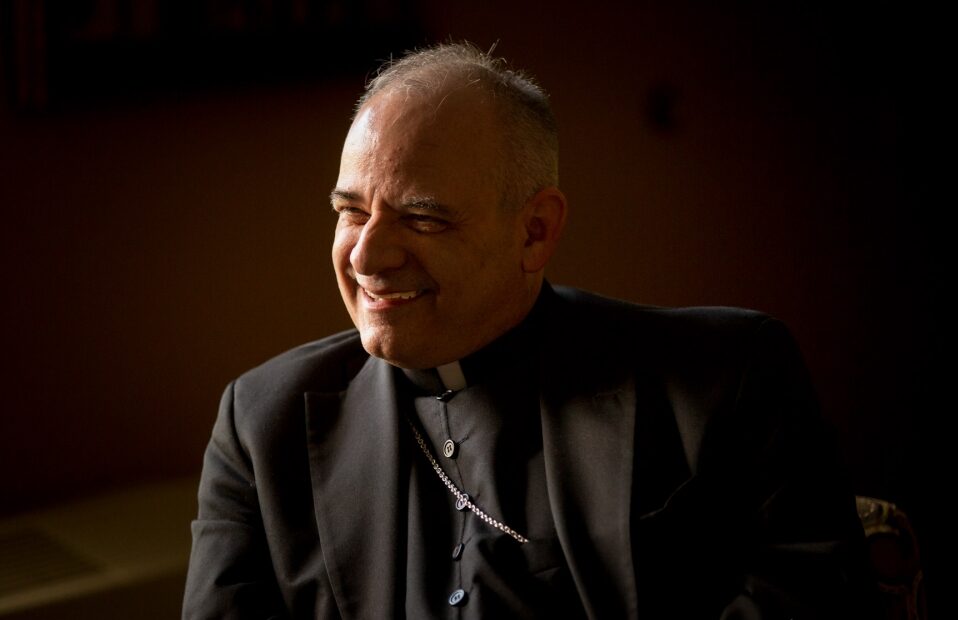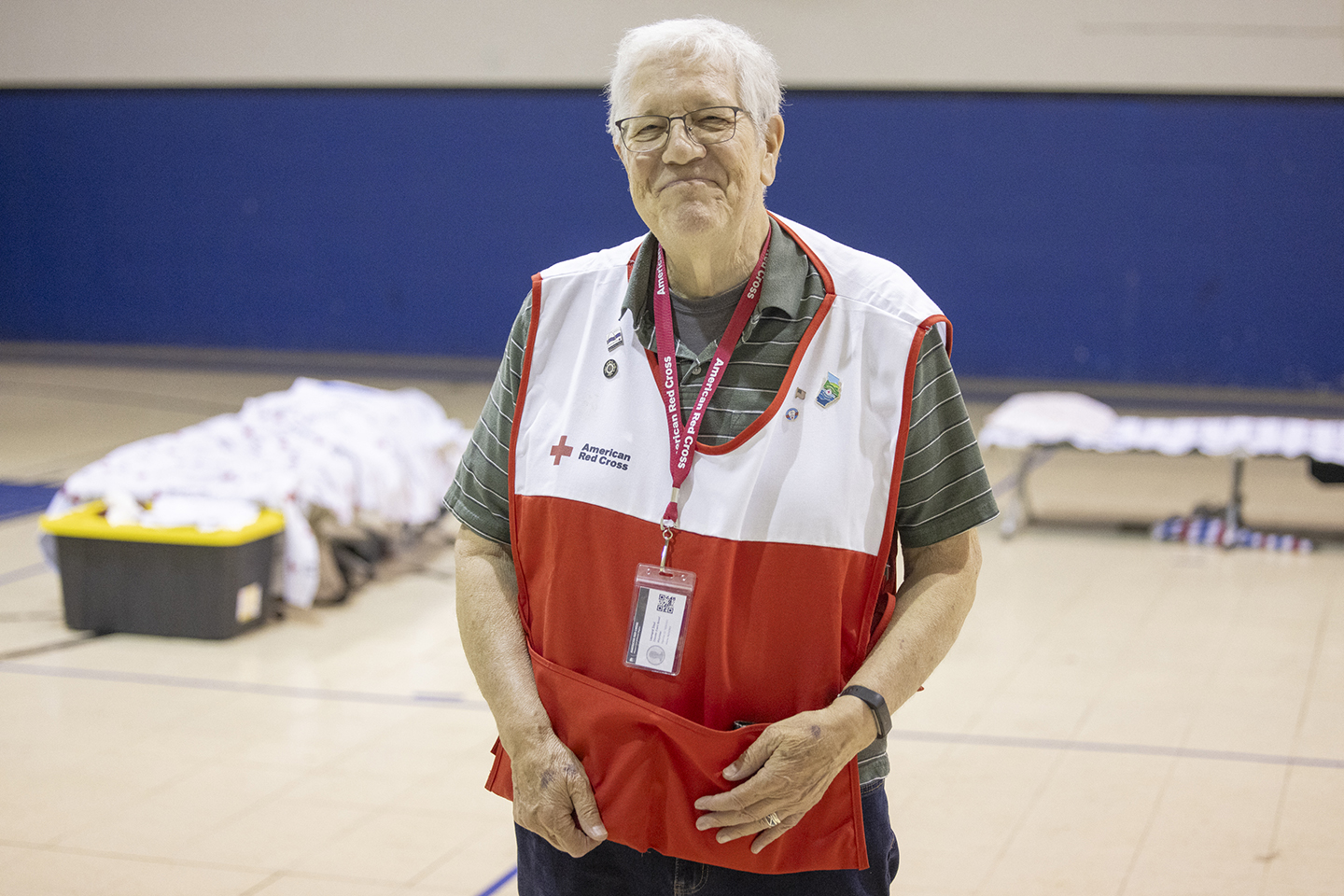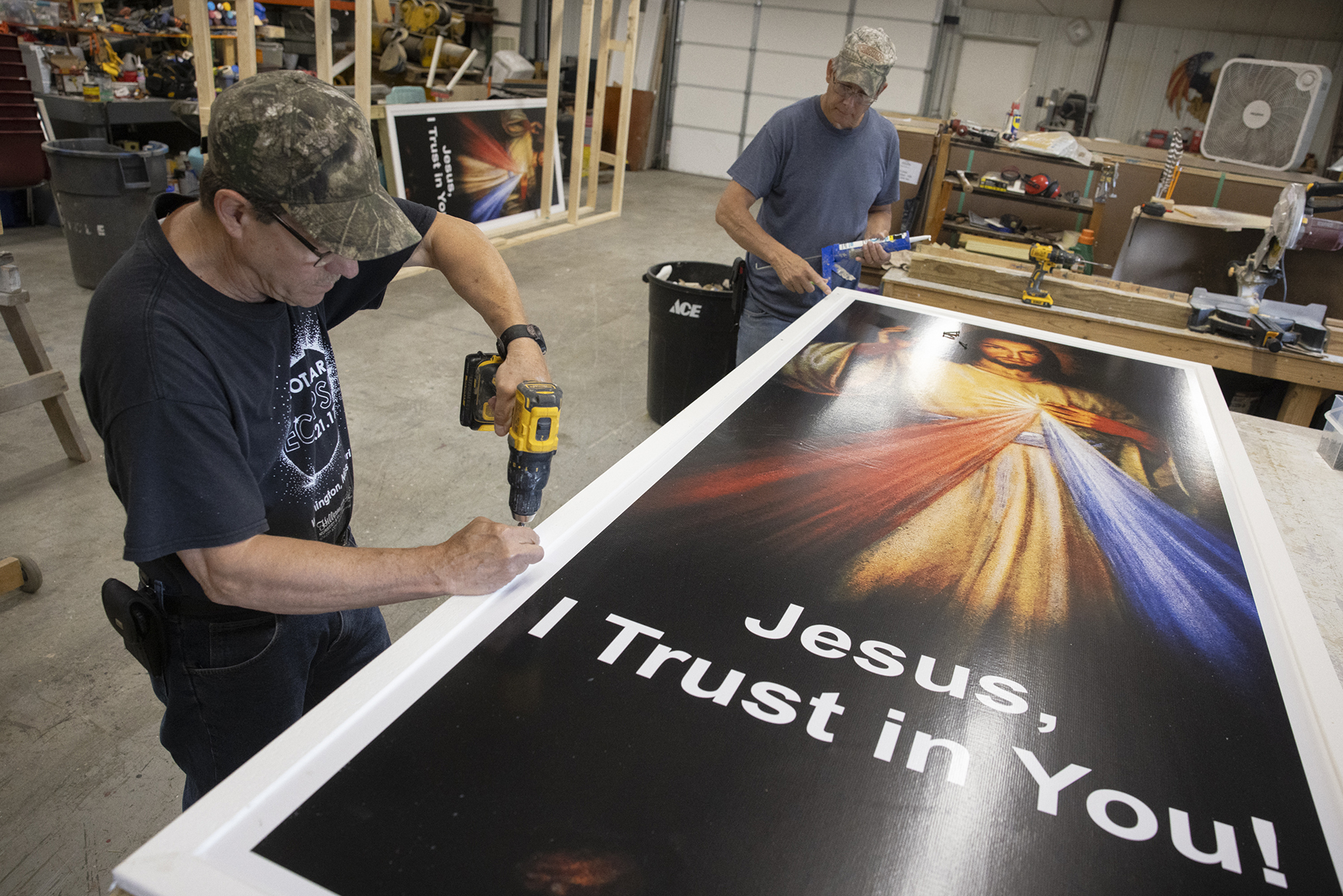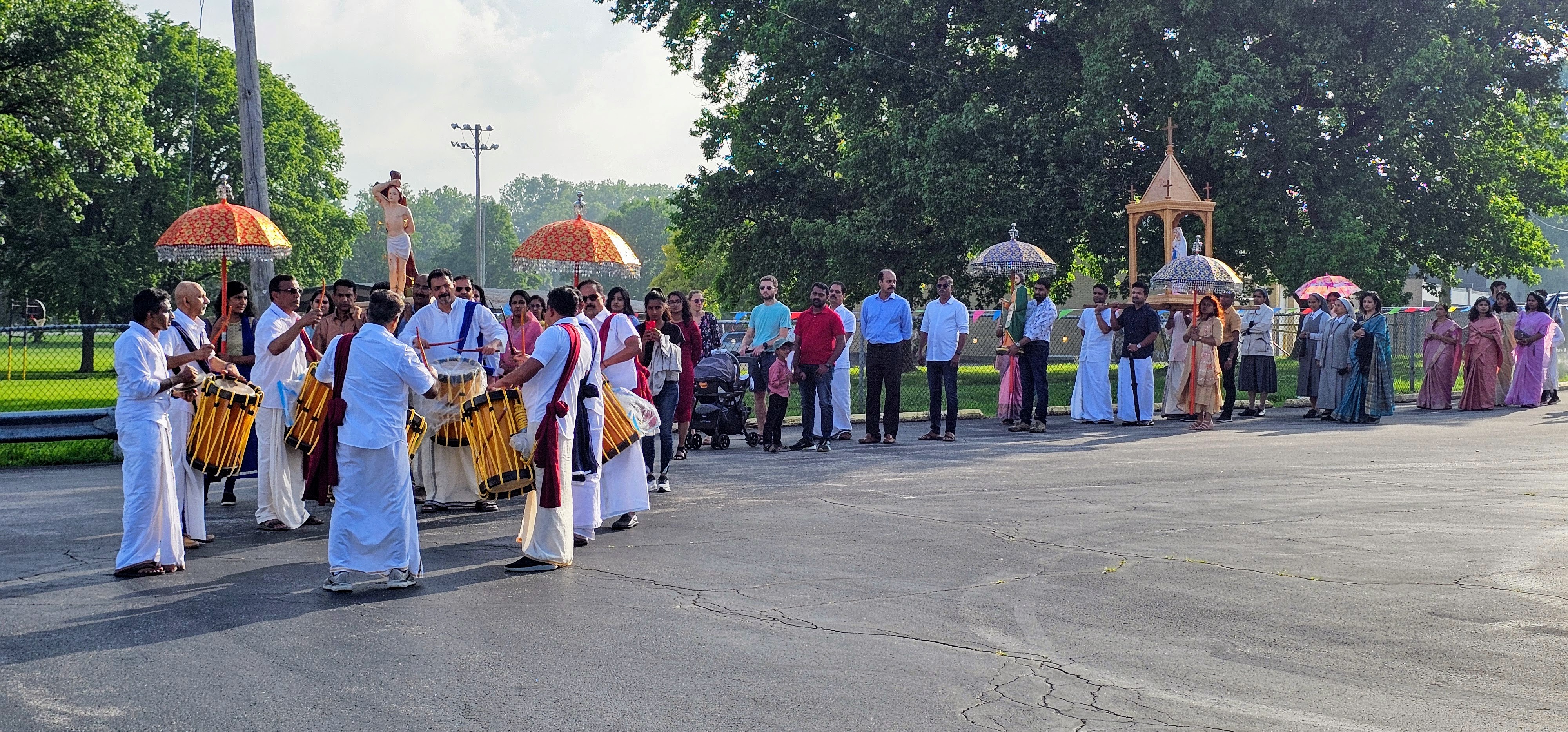Archbishop Romero recalled as voice of the voiceless poor

Salvadorans recall Blessed Romero risked his life for the Gospel message
The news from El Salvador in the early evening of March 24, 1980, sent shock waves beyond the violence-torn Central American nation. Archbishop Oscar Romero of San Salvador, a fiery defender of the poor, was killed by an assassin’s bullet as he celebrated Mass in a hospital chapel.
Bernarda Rendon, 75, describes herself as the daughter of “very poor” farmers in El Salvador. She remembers the times clearly. Blessed Romero, who will be canonized in Rome on Oct. 14, was assassinated the day after challenging the government and asking soldiers to stop killing innocent civilians.
Rendon sat in a coffee shop in south St. Louis with her son and two members of the St. Louis Inter-Faith Committee on Latin America. She described Blessed Romero’s slow acceptance of the clergy and base Christian communities of his archdiocese working alongside the explited rural poor, promoting social organizations and land reform. “At that time, the whole Church was like a flower that bloomed immensely,” Rendon said. “It was a Christian movement marked by the courage of the people and their deep faith in God.”

Rendon came to St. Louis with her family in 1983 as a refugee through the help of the Archdiocese of San Salvador. Her husband, who died 15 years ago, had just been released from jail in an amnesty for political prisoners. He was accused of being anti-government, arrested two years earlier after soldiers burst into their home.
“We were called Marxists, and we didn’t even know what a Marxist is,” she said.
She lived in El Salvador during a time when priests were expelled from the country and other people were persecuted for their faith, she recalled, noting that many were imprisoned and tortured unjustly. She was a participant in the base communities studying Scripture and trying to make sense of the government’s actions against its citizens.
Blessed Romero didn’t truly become the voice of the voiceless poor, she said, until the assassination of his friend, Jesuit Father Rutilio Grande in 1977 just three weeks after Blessed Romero was named Archbishop of San Salvador. Father Grande was a rural pastor who spoke with passion about injustices and worked with the people. First, the archbishop took some time to process the killing, a time many Salvadorans compare to Jesus’ praying in the Garden of Gethsemane before His crucifixion.
Blessed Romero gave people strength and power by demanding freedom for their friends and family who were arrested or disappeared, Rendon said.
Marilyn Lorenz, a member of the Inter-Faith Committee who has been to El Salvador 30 times, attended the beatification in Rome. What struck her is that “he is Romero of the Church, not just Romero of the poor and not just Romero of El Salvador. His way of being Church is an example to us that there is a risk to the Gospel,” Lorenz said.
Rendon’s son, Gustavo Rendon, said Blessed Romero’s life “made you proud to be Catholic.” Catholics can learn from Blessed Romero that “you have to speak the truth in order to live the Gospel,” he added.
Remembering
At Holy Trinity Parish in St. Ann, Daniel Diaz sat in the cafeteria just past a poster of Blessed Romero. “It is a very great joy,” he said of the upcoming canonization.
Diaz, who lived in a rural area of El Salvador, was about 17 when Blessed Romero was killed. He remembers listening to his homily on Palm Sunday on an old radio. He also remembers the false accusations and snipers shooting at people. “All of us living in rural areas were oppressed by the government,” he said.
In that time, just to say the words “liberation” or “oppressed” could bring death, Diaz said. Blessed Romero, he said, is “the saint of the oppressed and the poorest people.”
Another Holy Trinity parishioner, Lorena Contreras was 13 years old and lived in San Salvador at the time of the assassination. Blessed Romero “fought for the people even at the cost of his own life,” she said.
With his canonization, Contreras said, “all the blood shed in the country by the people will not be shed in vain.”
She said she had two uncles who were part of a labor union — one was killed and another beaten so bad that he died from his injuries after his release was arranged by Blessed Romero. Her family kept moving and tried to avoid people from either side in the conflict. She tells of a friend and her friend’s father, who went to get wood. While they were away, the other eight members of their household were slain. She also tells of people stacked one on top of each other and burned.
The people of St. Louis now have an intercessor with the extensive violence here, she said. His intercession also is needed in El Salvador where, after the civil war, so many young people were left without parents that there was a rise of gangs and related violence, Contreras added.
Norma Cruz, another Holy Trinity parishioner, said that the people of El Salvador already recognized Blessed Romero’s saintly qualities at the time of his martyrdom. “He offered his blood for the peace of his country,” she said. “We have all become enriched.”
>> Events in St. Louis
On Sunday, Oct. 14, Blessed Oscar Romero will be canonized as a saint in Rome. In St. Louis, leading up to that day, a celebration of the canonization, “Walking in Hope,” is planned starting Oct. 7 and culminating the same day as his canonization.
The highlight will be on, Oct. 14, with midnight fellowship and 3 a.m. live streaming of the canonization Mass at the Eckelkamp Center for Campus Ministry on the Saint Louis University campus. That’s followed at 12:30 p.m. with prayer and reflection service at the Saint Louis University Clocktower at West Pine Mall and Spring Avenue followed by a pilgrimage to the Cathedral Basilica of St. Louis for a Mass celebrated by Auxiliary Bishop Mark S. Rivituso and homily by Jesuit Father Tim McMahon. A reception will be held following Mass.
The week’s events begin Sunday, Oct. 7, from 9:15-10:15 a.m., with a talk on “Oscar Romero: Archbishop with an Attitude” by Father McMahon, at St. Francis Xavier College Parish in the ballroom below the church, 3628 Lindell Blvd.
Several academic and public lectures are being held during the week. A community forum at 7 p.m. Wednesday, Oct. 10, on “A Catholic Response to an Unjust Immigration Policy: What Romero’s Legacy Teaches Us,” will be held at the Cardinal Rigali Center, 20 Archbishop May Drive in Shrewsbury.
On Thursday, Oct. 11, at 5:30 p.m., a free documentary screening will be held of “Monseñor: The Last Journey of Oscar Romero,” at the Moolah Theatre, 3821 Lindell Blvd., with a discussion to follow.
“Stations of the Cross — The Journey of the Salvadoran People, Mirrored in the Way of the Cross” will take place at noon Friday, Oct. 12, at the Saint Louis University Clocktower at West Pine Mall and Spring Avenue; at 7 p.m. is “Stations of the Cross — Romero’s Meditations for Today’s Families” (music by Adam Bitter) at Our Lady of Guadalupe Church, 1115 S. Florissant Road in Ferguson.
A celebration of the 25th anniversary of Our Lady of Guadalupe Church becoming bilingual and a celebration of Blessed Oscar Romero will be at 5 p.m. Mass Saturday, Oct. 13, at the parish church, 1115 S. Florissant Road in Ferguson.
An art display inspired by Blessed Romero will be at the Museum of Contemporary Religious Art at SLU, 11 a.m. – 4 p.m. Tuesday – Sunday.
For the full list of events, visit www.romerostl2018.squarespace.com/
The news from El Salvador in the early evening of March 24, 1980, sent shock waves beyond the violence-torn Central American nation. Archbishop Oscar Romero of San Salvador, a fiery … Archbishop Romero recalled as voice of the voiceless poor
Subscribe to Read All St. Louis Review Stories
All readers receive 5 stories to read free per month. After that, readers will need to be logged in.
If you are currently receive the St. Louis Review at your home or office, please send your name and address (and subscriber id if you know it) to subscriptions@stlouisreview.com to get your login information.
If you are not currently a subscriber to the St. Louis Review, please contact subscriptions@stlouisreview.com for information on how to subscribe.







